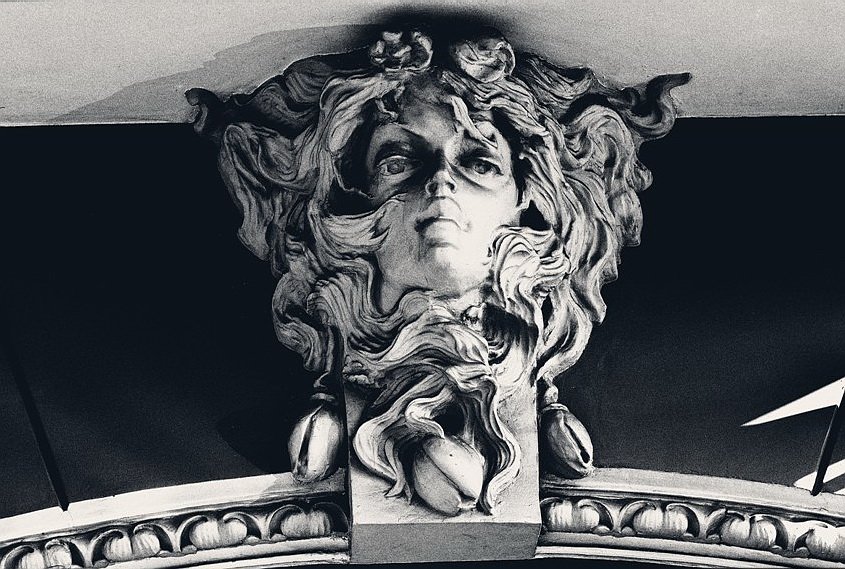Николай Иванович Жерихов (1870-е гг., Смоленск - 5 октября 1916 г., Москва) – московский архитектор, не имеющий специального архитектурного образования . Работал в стиле модерн, был очень востребован современниками в начале ХХ века, щедро украшал свои здания лепниной и скульптурами.Родился в Смоленске в семье безземельных крестьян, предположительно выходцев из-под Могилева. Точные обстоятельства его рождения, ранних годов жизни и образования не установлены.
Вероятно, он окончил Строгановское училище со званием «ученого рисовальщика» в 1890-е гг. В 1897—1900 г. преподавал рисование и чистописание в школах. Известно, что его младшие братья смогли окончить Московское училище живописи, ваяния и зодчества. Есть сведения¸ что Николай Жерихов был штатным архитектором при московском застройщике инженере О.О. Вильнере.
Его первый собственный заказ – строительство доходного дома Г.Е. Бройдо на Остоженке, 20, в 1902 г. – делает его модным архитектором до самой смерти. В 1990-е гг. здание варварски реконструировали, в результате чего авторский декор был утрачен.
Николай Иванович продолжал строить один за другим доходные дома для московских купцов Бройдо, Вильнера, Зайченко в районе Арбата, Остоженки, Басманных улиц, Сретенки и окрестных переулков с 1902 по 1916 гг. Сам архитектор поселился в Дегтярном пер., 10, в здании по проекту архитектора М.Г. Пиотровича.
Самый знаменитый дом из построенных Николаем Жериховым доходных домов принадлежал Г.Е. Бройдо. Этот дом на углу Малого Могильцевского и Плотникова переулков возведен в 1907 г. Его украшают несколько десятков скульптур в странных позах. Некоторые скульптуры отчетливо похожи на великих русских писателей: Гоголя, Пушкина и Толстого, в облике сатиров, целующихся и обнимающихся с музами. По одной из версий скульптор Л.С. Синаев-Берштейн сделал их для Музея изящных искусств на Волхонке. Но заказчик – создатель музея И.В. Цветаев отверг их. Сейчас эти скульптуры сильно разрушены от времени и варварского отношения: некоторые облиты черной краской, другие отлетели из-за расширения проемов окон для установки стеклопакетов, барельеф над крыльцом снесн разворачивающимся грузовиком.
Через три года Николай Жерихов использовал этот прием в виде похожей ленты скульптур при проектировании гимназии Флерова в Мерзляковском переулке, д.1, но уже без какого-либо портретного сходства.
Всего Николай Жерихов построил 46 домов за 12 лет активной работы.
Nikolay Ivanovich Zherikhov (1870-ies., Smolensk - October 5, 1916, Moscow) - Moscow architect who did not have a special architectural education. He worked in the Art Nouveau style, was in great demand by contemporaries in the early twentieth century, lavishly decorated their houses with stucco and sculptures.
Born in Smolensk in the family of landless peasants, presumably originating from the Mogilev. The exact circumstances of his birth, the early years of life and education have not been established. Perhaps he graduated from the Stroganov School with the title "scientist draftsman" in the 1890s. In 1897-1900 he taught painting and calligraphy in schools. It is known that his younger brothers were able to finish the Moscow School of Painting, Sculpture and Architecture. There svedeniya¸ Zherikhov that Nicholas was a staff architect at a Moscow developer, engineer OO Wilner.
His first own order - the construction of the apartment building for GE Broido at 20 Ostozhenka street, in 1902 – made him a fashionable architect until his death. In the 1990s. building was barbarously reconstructed, resulting in the loss of the author's decor.
Nikolai Ivanovich went on to build apartment buildings one after the other for Moscow merchants Broido, Vilner, Zaychenko in the Arbat, Ostozhenka, Basmannaya streets, Sretenka alleys and surrounding area from 1902 to 1916. The architect himself settled in 10 Degtyarny lane, in a building designed by the architect MG Piotrowicz.
The most famous of the house built by Nicholas Zherikhov is tenements owned by GE Broido. This house is on the corner of the Small Mogiltsevsky and Plotnikov lanes built in 1907. It is decorated with several dozen sculptures in strange poses. Some sculptures clearly similar to the great Russian writers: Gogol, Pushkin and Tolstoy, in the form of a satyr, kissing and hugging with the Muses. In one version of the sculptor LS Sinaev- Bernstein made them for the Museum of Fine Arts on Volkhonka. But the customer - the creator of the museum IV Tsvetayev rejected them. Now these sculptures are severely damaged by time and barbaric attitude: some doused with black paint, others flew off due to the expansion of openings for the installation of glass windows, bas-relief on the porch destroyed by a truck going reverse.
Three years later, Nicholas Zherikhov used this technique in the form of a tape-like sculptures in the design of the gymnasium in Flerova Merzlyakovsky Lane, 1, but without any resemblance to the portrait.
Nikolai Zherikhov built total of 46 houses in 12 years of his active work.










